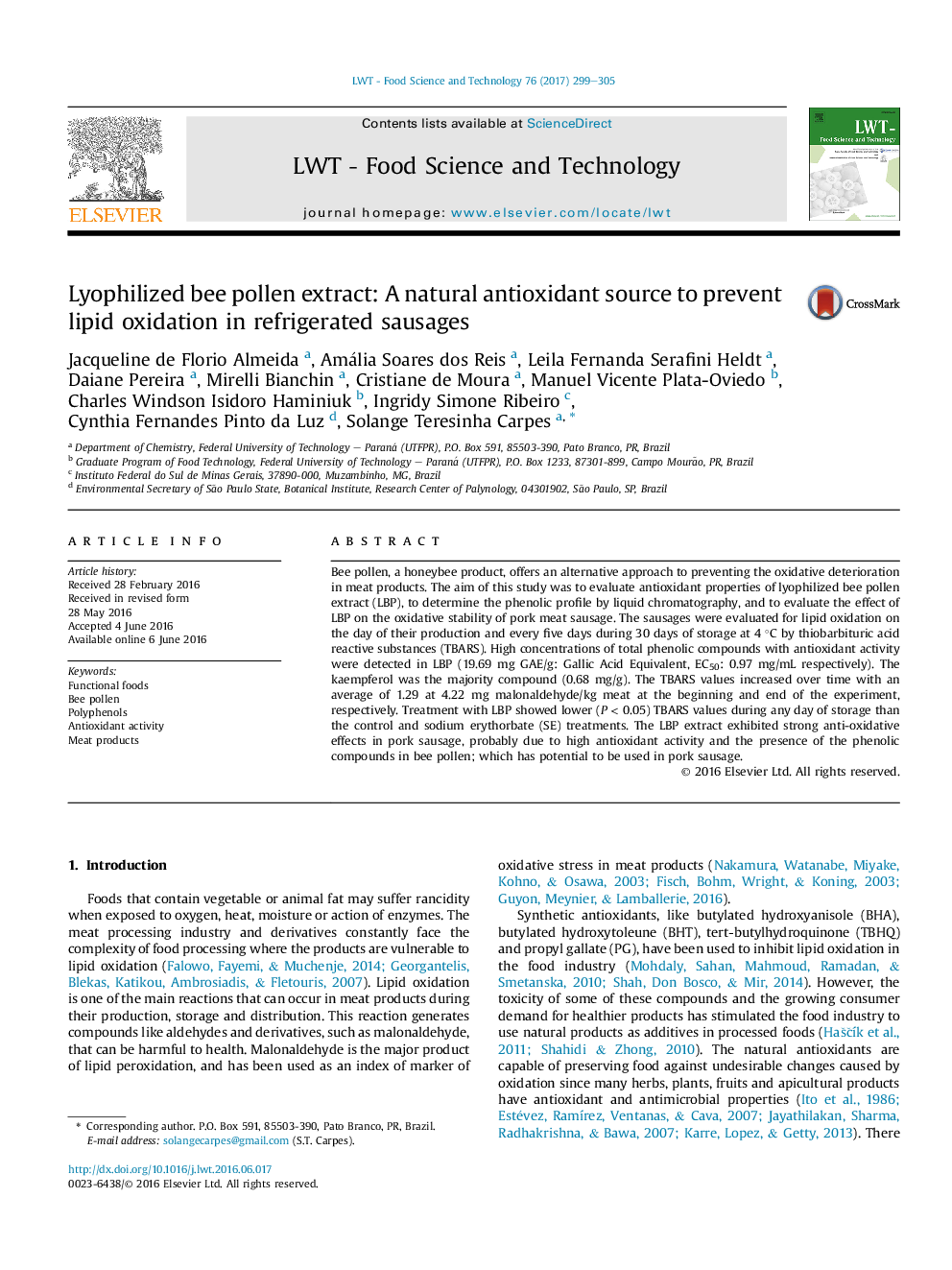| Article ID | Journal | Published Year | Pages | File Type |
|---|---|---|---|---|
| 5769123 | LWT - Food Science and Technology | 2017 | 7 Pages |
â¢The phenolic compounds content was 19.69 mg GAE/g, Gallic Acid Equivalent.â¢High antioxidant activity was found in lyophilized bee pollen extract.â¢Kaempferol and quercetin were present in greater amounts in the bee pollen extract.â¢Lyophilized bee pollen was effective in retarding lipid oxidation in sausage.
Bee pollen, a honeybee product, offers an alternative approach to preventing the oxidative deterioration in meat products. The aim of this study was to evaluate antioxidant properties of lyophilized bee pollen extract (LBP), to determine the phenolic profile by liquid chromatography, and to evaluate the effect of LBP on the oxidative stability of pork meat sausage. The sausages were evaluated for lipid oxidation on the day of their production and every five days during 30 days of storage at 4 °C by thiobarbituric acid reactive substances (TBARS). High concentrations of total phenolic compounds with antioxidant activity were detected in LBP (19.69 mg GAE/g: Gallic Acid Equivalent, EC50: 0.97 mg/mL respectively). The kaempferol was the majority compound (0.68 mg/g). The TBARS values increased over time with an average of 1.29 at 4.22 mg malonaldehyde/kg meat at the beginning and end of the experiment, respectively. Treatment with LBP showed lower (P < 0.05) TBARS values during any day of storage than the control and sodium erythorbate (SE) treatments. The LBP extract exhibited strong anti-oxidative effects in pork sausage, probably due to high antioxidant activity and the presence of the phenolic compounds in bee pollen; which has potential to be used in pork sausage.
